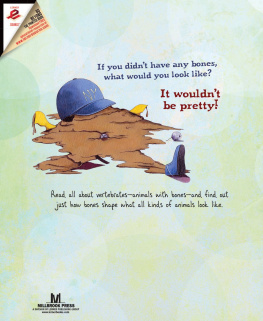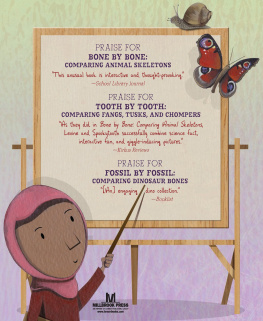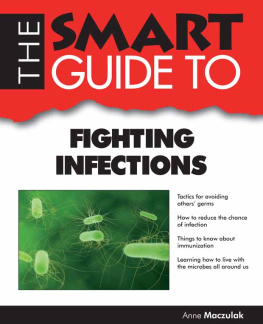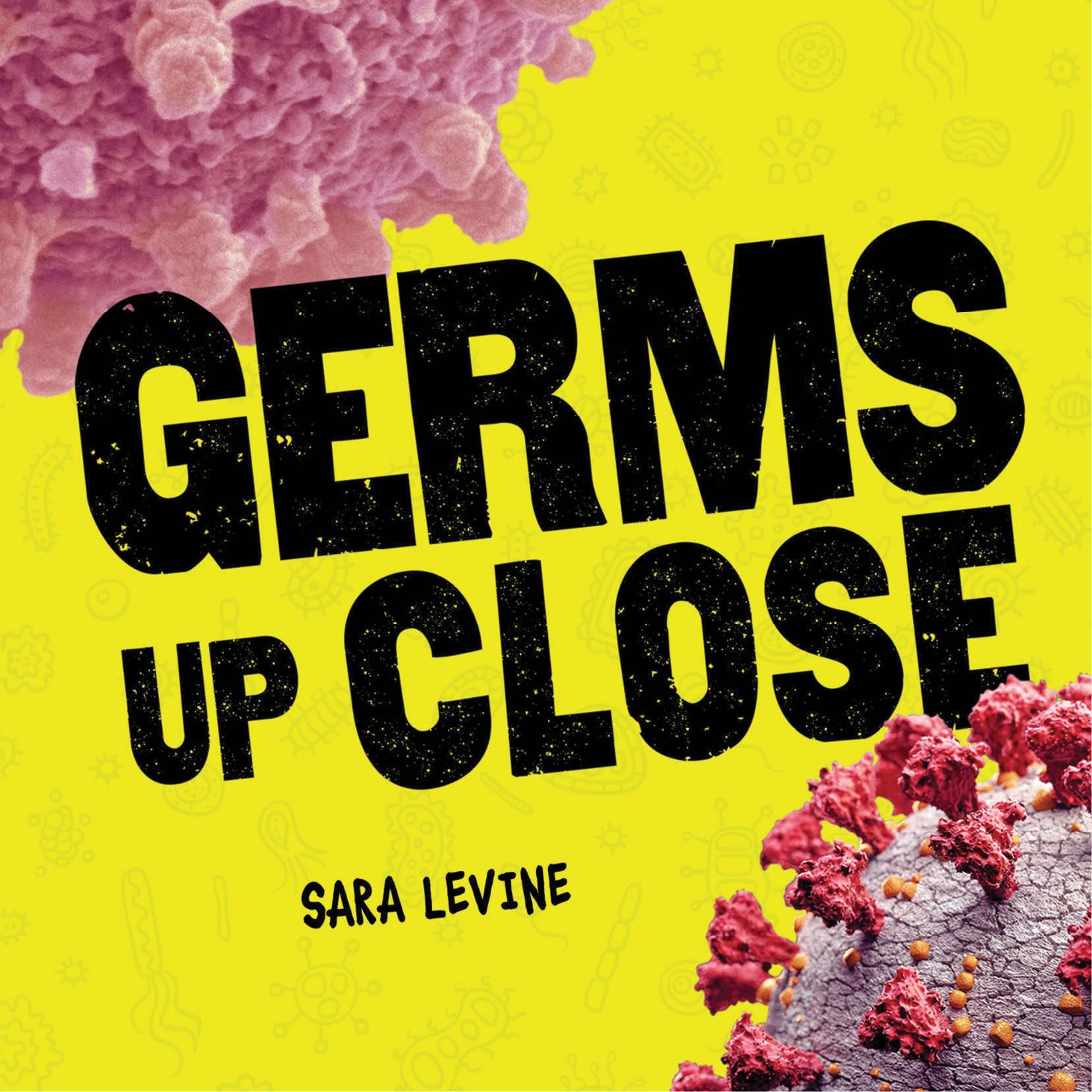J Millbrook Press/Minneapolis
Thank you to Glen C. McGugan Jr., Ph.D., Program Officer, National Institute of Allergy and Infectious Diseases, Parasitology and International Programs Branch, Division of Microbiology and Infectious Diseases, and to Robert A. Levine, MD, Clinical Professor of Laboratory Medicine, Yale School of Medicine, for reviewing this book for accuracy and sharing their insights.
Text copyright 2021 by Sara Levine
All rights reserved. International copyright secured. No part of this book may be reproduced, stored in a retrieval system, or transmitted in any form or by any meanselectronic, mechanical, photocopying, recording, or otherwisewithout the prior written permission of Lerner Publishing Group, Inc., except for the inclusion of brief quotations in an acknowledged review.
Millbrook Press
An imprint of Lerner Publishing Group, Inc.
First Avenue North
Minneapolis, MN 55401 USA
For reading levels and more information, look up this title at www.lernerbooks.com .
Image credits: Centers for Disease Control and Prevention Public Health Image Library/Alissa Eckert - Medical Illustrator, p. 3; DENNIS KUNKEL MICROSCOPY/SCIENCE PHOTO LIBRARY/Getty Images, p. (top); Kateryna Kon/Shutterstock.com, pp. (bottom), 9, all, 12, 13, 16, 17; Jannicke Wiik-Nielsen/iStock/Getty Images, p. (left); Festa/Shutterstock.com, pp. (right); Callista Images/Image Source/Getty Images, p. (left); STEVE GSCHMEISSNER/SCIENCE PHOTO LIBRARY/Getty Images, p. (right); royaltystockphoto.com/ Shutterstock.com, p. (top); James Joel//flickr (CC BY-ND 2.0), p. (bottom); Centers for Disease Control and Prevention Public Health Image Library/Janice Haney Carr, p. (top); Centers for Disease Control and Prevention Public Health Image Library/Jennifer Oosthuizen - Medical Illustrator, p. (bottom); Kateryna Kon/Shutterstock.com, pp. 9, all, 12, 13, 16, 17; Christoph Burgstedt/ Shutterstock.com, p. (left); Ed Reschke/Stone/Getty Images, p. 11; Barbol/Shutterstock.com, p. (left); Centers for Disease Control and Prevention Public Health Image Library, p. (right); KATERYNA KON/SCIENCE PHOTO LIBRARY/Getty Images, p. (bottom); Science Photo Library RF/Getty Images, p. (top); koto_feja/Getty Images, p. (left); CAVALLINI JAMES/BSIP/Alamy Stock Photo, p. (right); Stocktrek Images/Getty Images, p. 19; Ralwel/iStockphoto/Getty Images, p. (top); decade3d/Shutterstock. com, p. (bottom); GEMINI PRO STUDIO/Shutterstock.com, p. 21; JUAN GAERTNER/SCIENCE PHOTO LIBRARY/Getty Images, p. 22; Science Photo Library/Alamy Stock Photo, p. 23; Schira/Shutterstock.com, p. (left); Ed Reschke/Getty Images, p. (top right), (Bottom Right), (bottom); Chamaiporn Naprom/Shutterstock.com, p. (top); Laura Westlund/Independent Picture Service, p. (bottom);Juergen Schonnop/Alamy Stock Photo, p. 26; AnnaKostyuk/Shutterstock.com, p. (inset); GoodLifeStudio/Getty Images, p. 27; Davizro Photography/Shutterstock.com, p. 28; Gorodenkoff/Shutterstock.com, p. 29; michaeljung/Shutterstock.com, p. Cover: U.S. Credit: NIAID-RML (top left); Zilinsky/Moment/Getty Images (top right and back); STEVE GSCHMEISSNER/Science Photo Library RF/Getty Images (bottom left); SciePro/Shutterstock.com (bottom right).
Designed by Viet Chu.
Main body text set in Abadi MT Std.
Typeface provided by Monotype Typography.
Library of Congress Cataloging-in-Publication Data
Names: Levine, Sara (Veterinarian), author.
Title: Germs up close / Sara Levine.
Description: Minneapolis : Millbrook Press, [2021] | Includes bibliographical references. | Audience: Ages | Audience: Grades | Summary: Have you ever seen a germ up close? Really, really up close? Micrographs and illustrations combine with accessible text to introduce readers to viruses, bacteria, protozoa, and fungiincluding COVID-19that can make people sick Provided by publisher.
Identifiers: LCCN 2020021737 (print) | LCCN 2020021738 (ebook) | ISBN 9781728424088 (library binding) | ISBN 9781728424095 (ebook)
Subjects: LCSH: Germ theory of diseaseJuvenile literature. | VirusJuvenile literature. | BacteriaJuvenile literature.
Classification: LCC RB153 .L48 2021 (print) | LCC RB153 (ebook) | DDC 614.5/7dc23
LC record available at https://lccn.loc.gov/2020021737
LC ebook record available at https://lccn.loc.gov/2020021738
Manufactured in the United States of America
1-49252-49372-10/6/2020
For Katy S.L.
Look out! Theres something on this page that can make you sick. Its huge, its brightly colored... ITS A GERM!
In real life, germs are itty-bittyway too small for you to see even with a magnifying glass. So what exactly are they?
E. coli
Germs are tiny things that can live on or inside your body and cause disease. These microscopic monsters are hard to imagine because we cant see them. But with special magnifying equipment and some dye to make their parts show up, we can! Who would have imagined they would be so interesting and beautiful to look at?
bacteria
protozoa
Four types of germs cause illness: bacteria , protozoa , fungi , and viruses . Do you want to see what they look like really, really close up?
fungi
virus
Bacteria
Have you ever had a cavity? An ear infection? Strep throat? If so, bacterial germs were likely to blame.
Bacteria can be found pretty much everywhere: they are the potty germs, the dirt germs, the germs on and inside your body. In fact, you have more bacteria than cells in your body! Alarmed? Dont be. Most types of bacteria arent bad to have around. The ones that are bad, we call germs.
A mix of bacteria living in the mouth
What do good bacteria do? They have important jobs. Some live in our large intestines where they help us digest and make vitamins from the food we eat. Others occupy our skin like a silent army. They take up space so germs that can make us sick dont have room to move in.
Bacteria are not the smallest germs, but they are small. They are only one cell big. About 31,800 E. coli bacteria would fit on the surface of the period at the end of this sentence. Bodies of bacteria have different shapes, but many are round, hot dogshaped, or wormlike and squiggly.
Salmonella
Spirillum





















